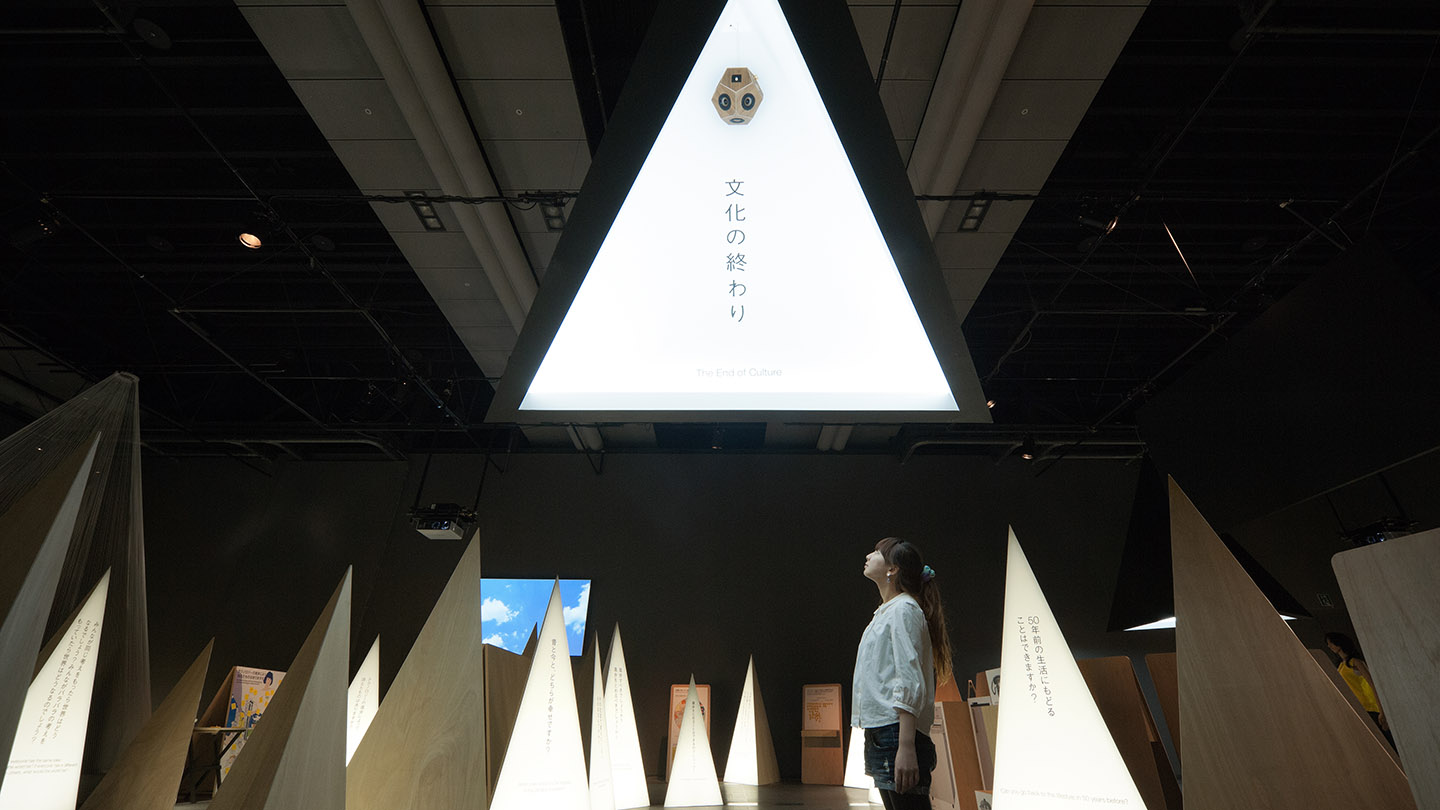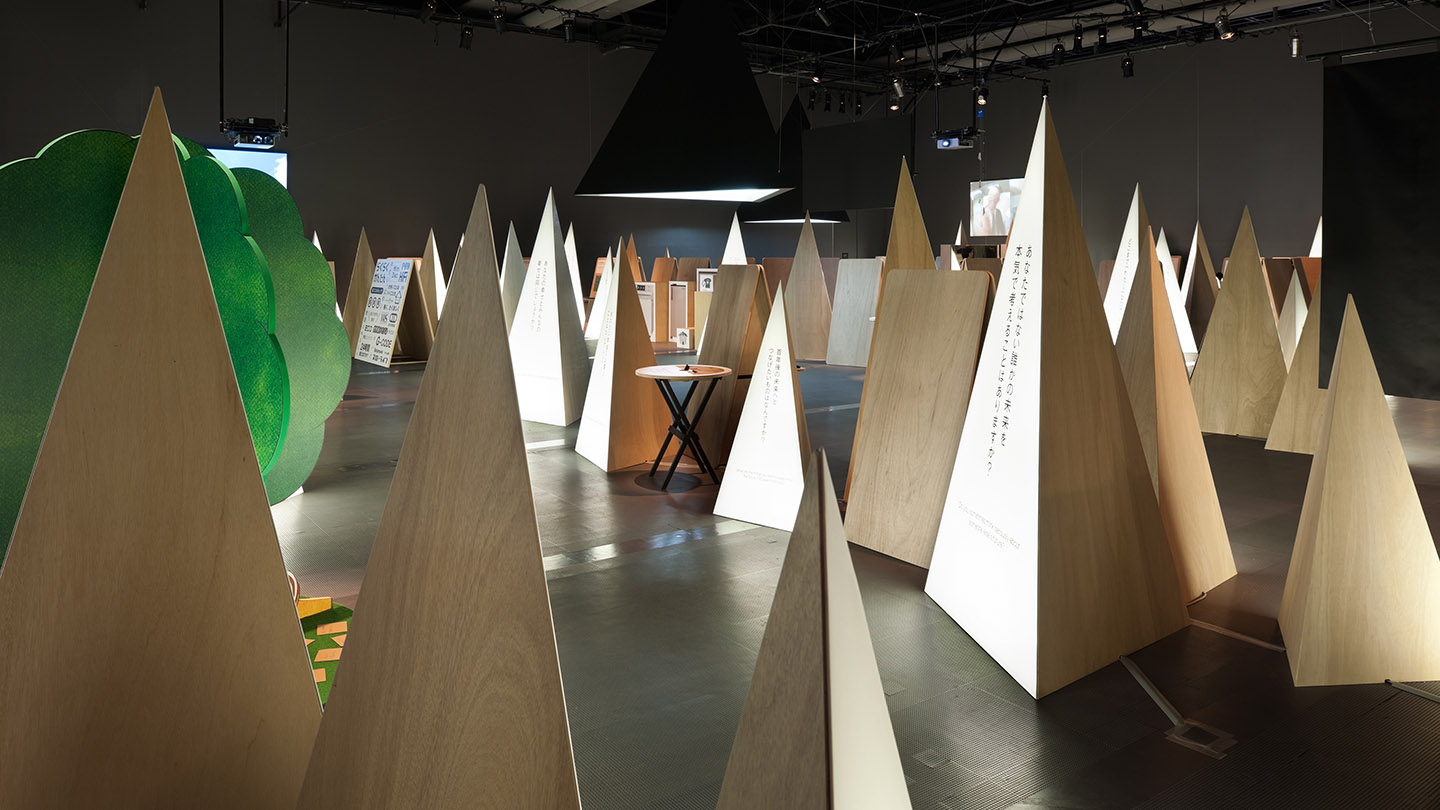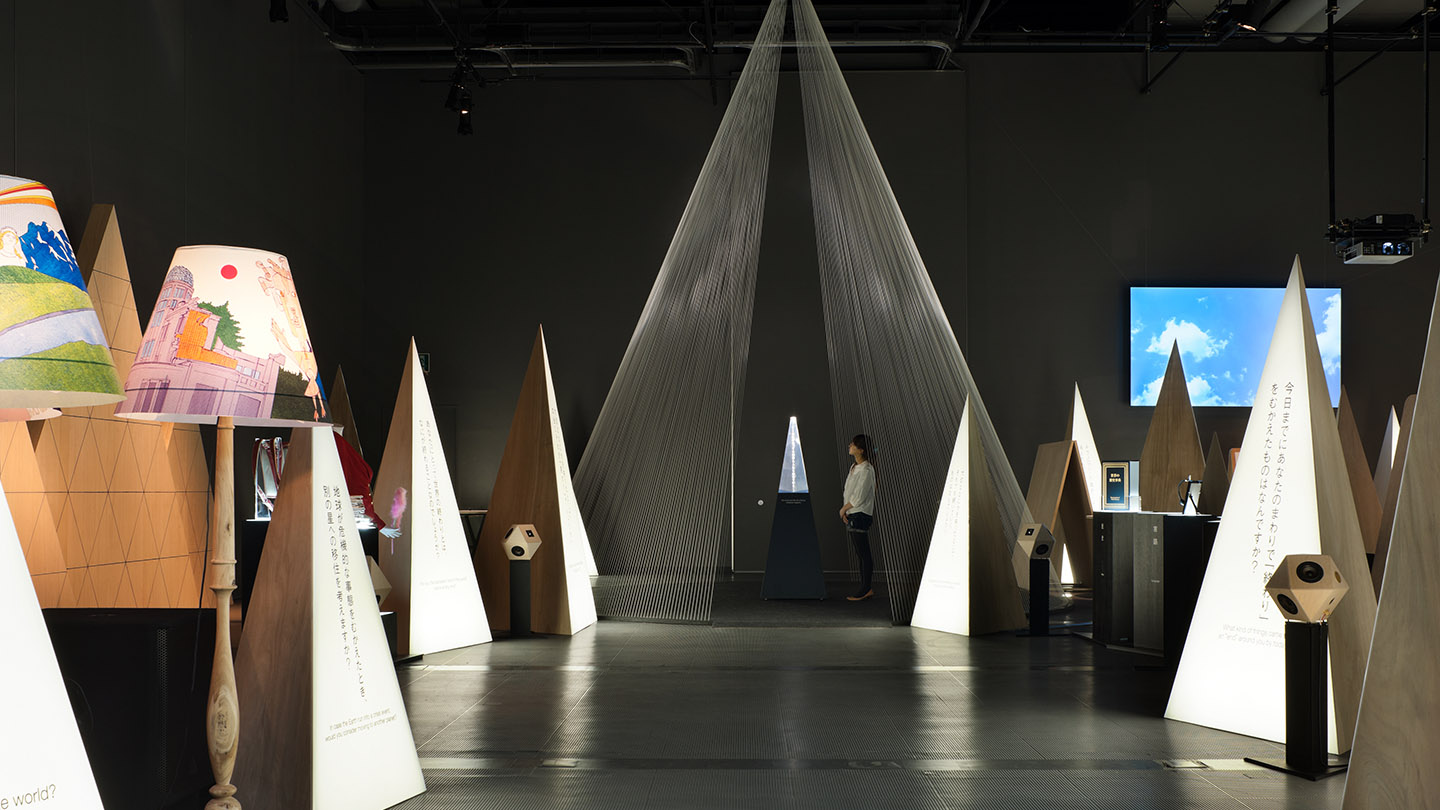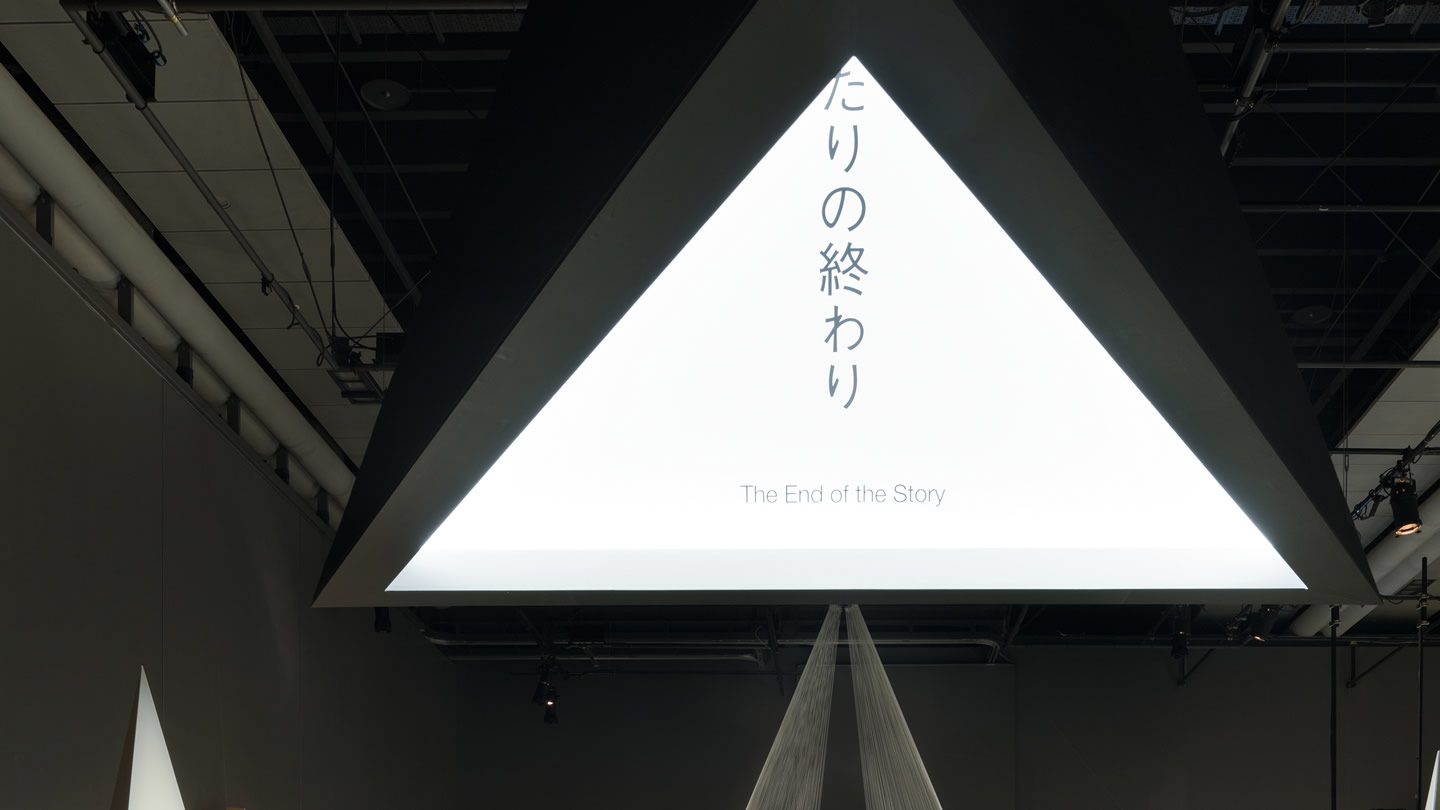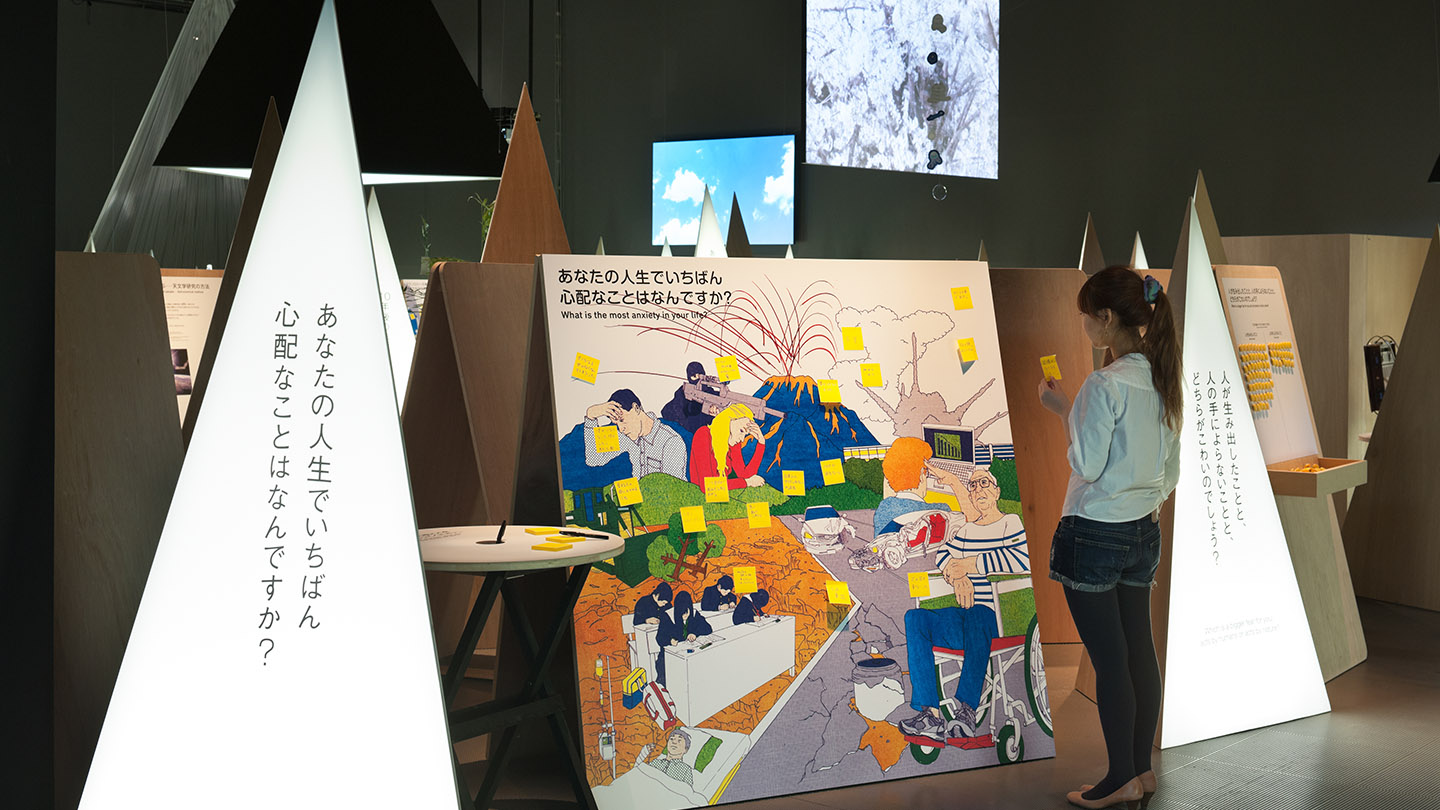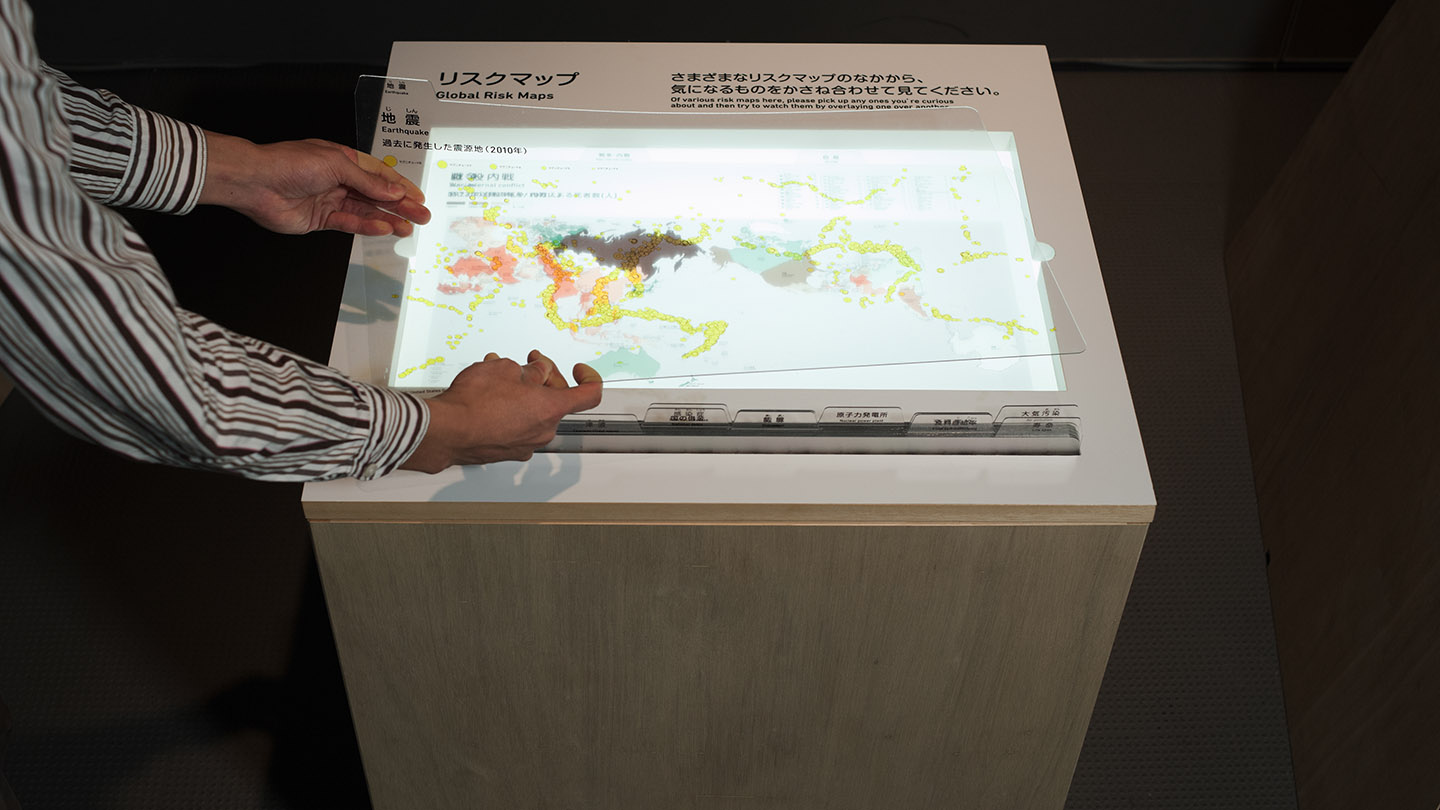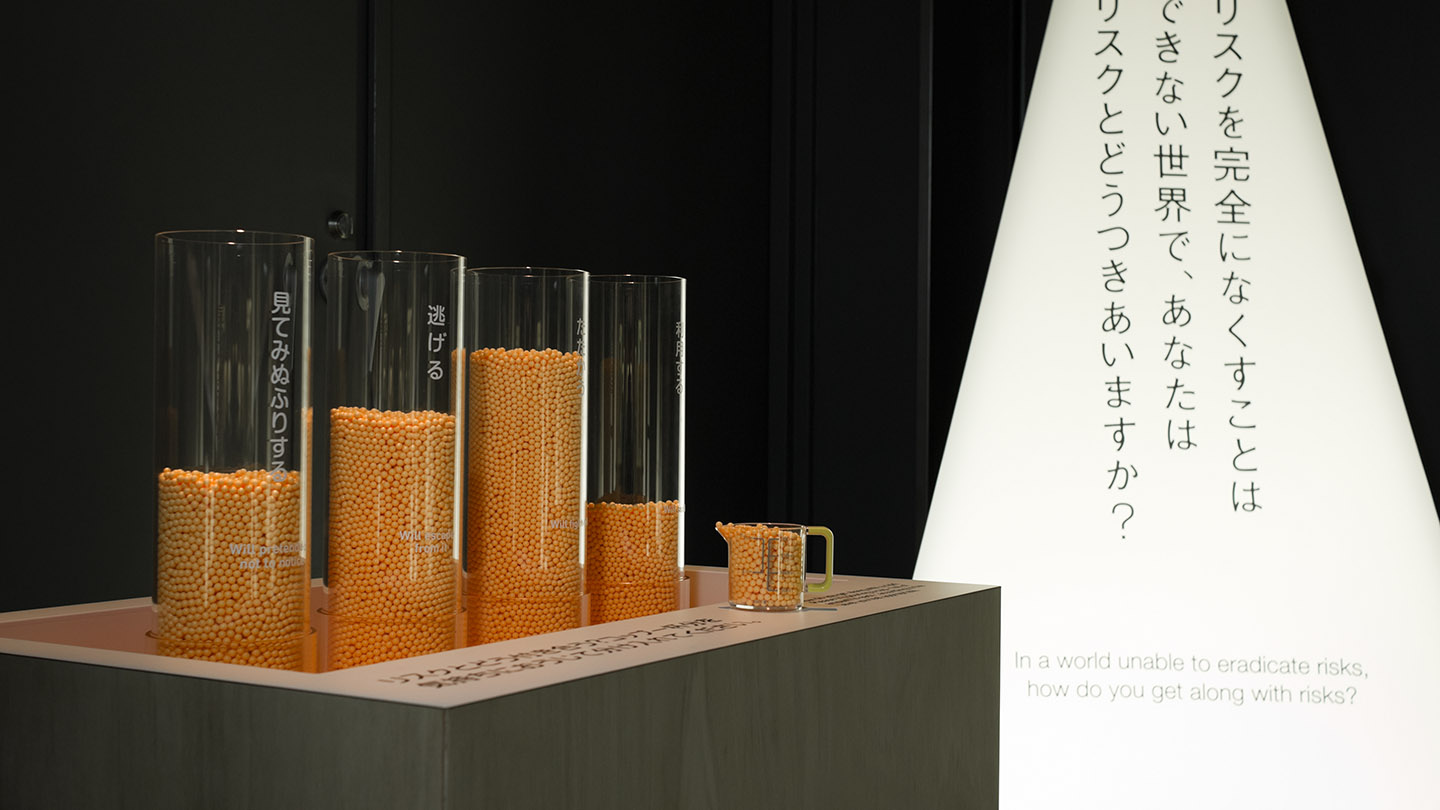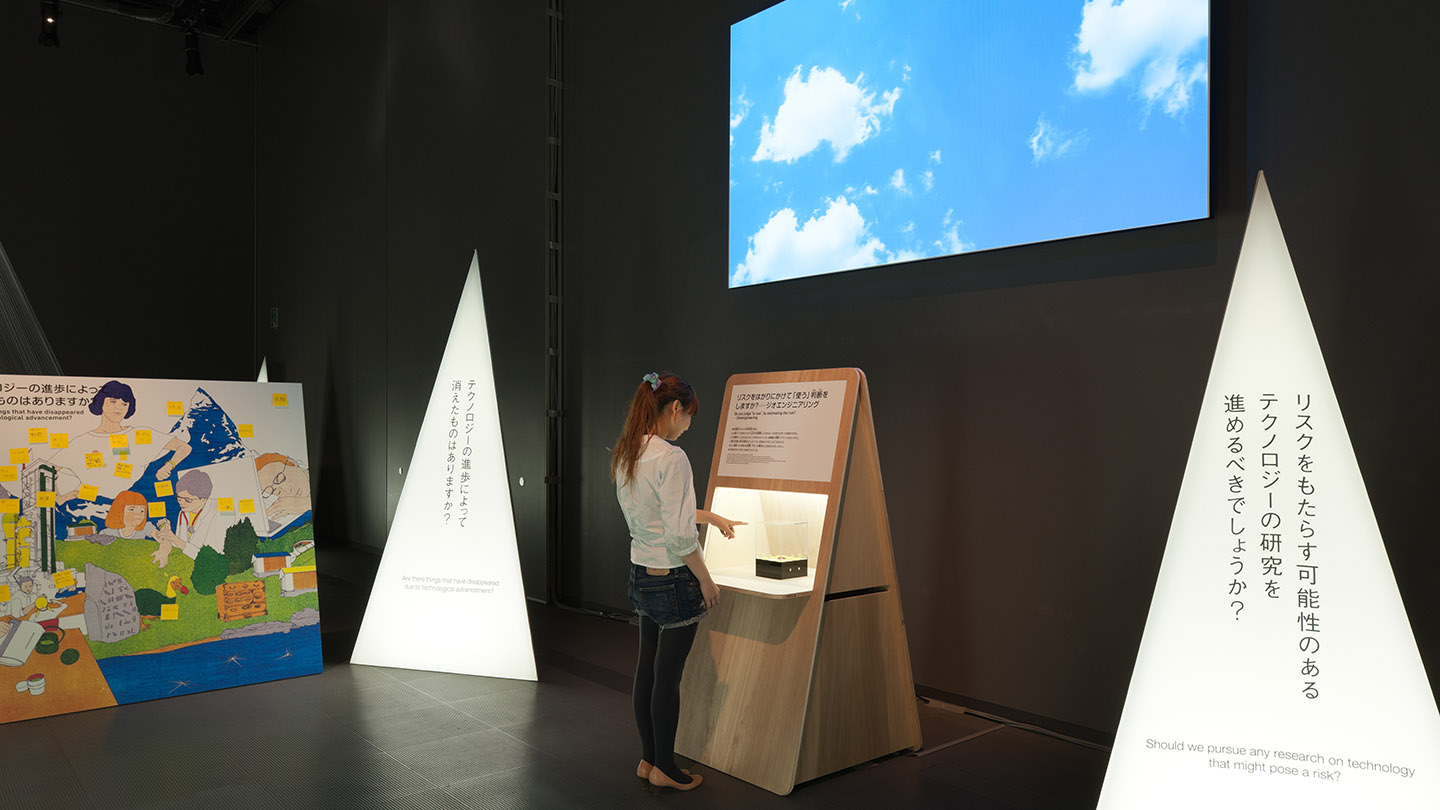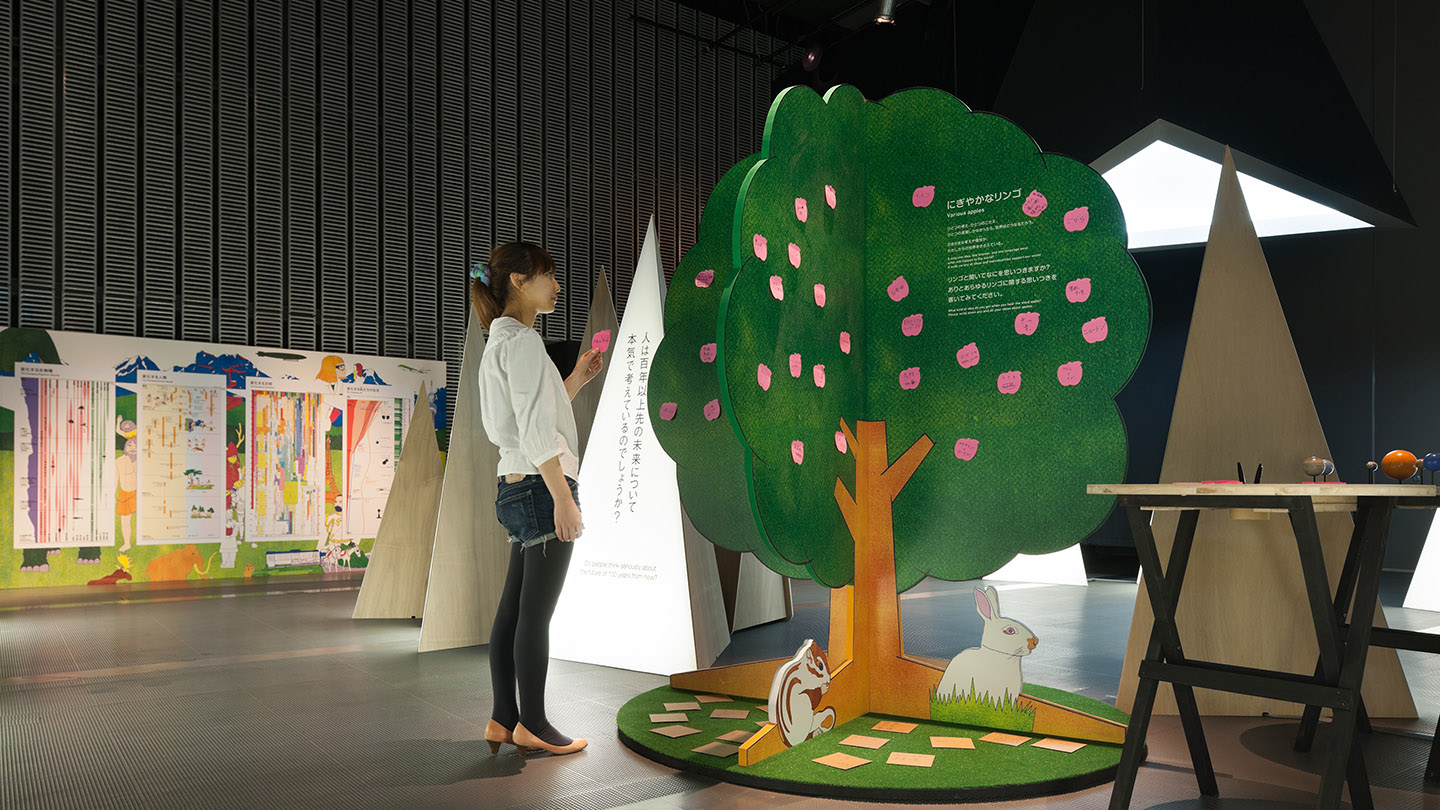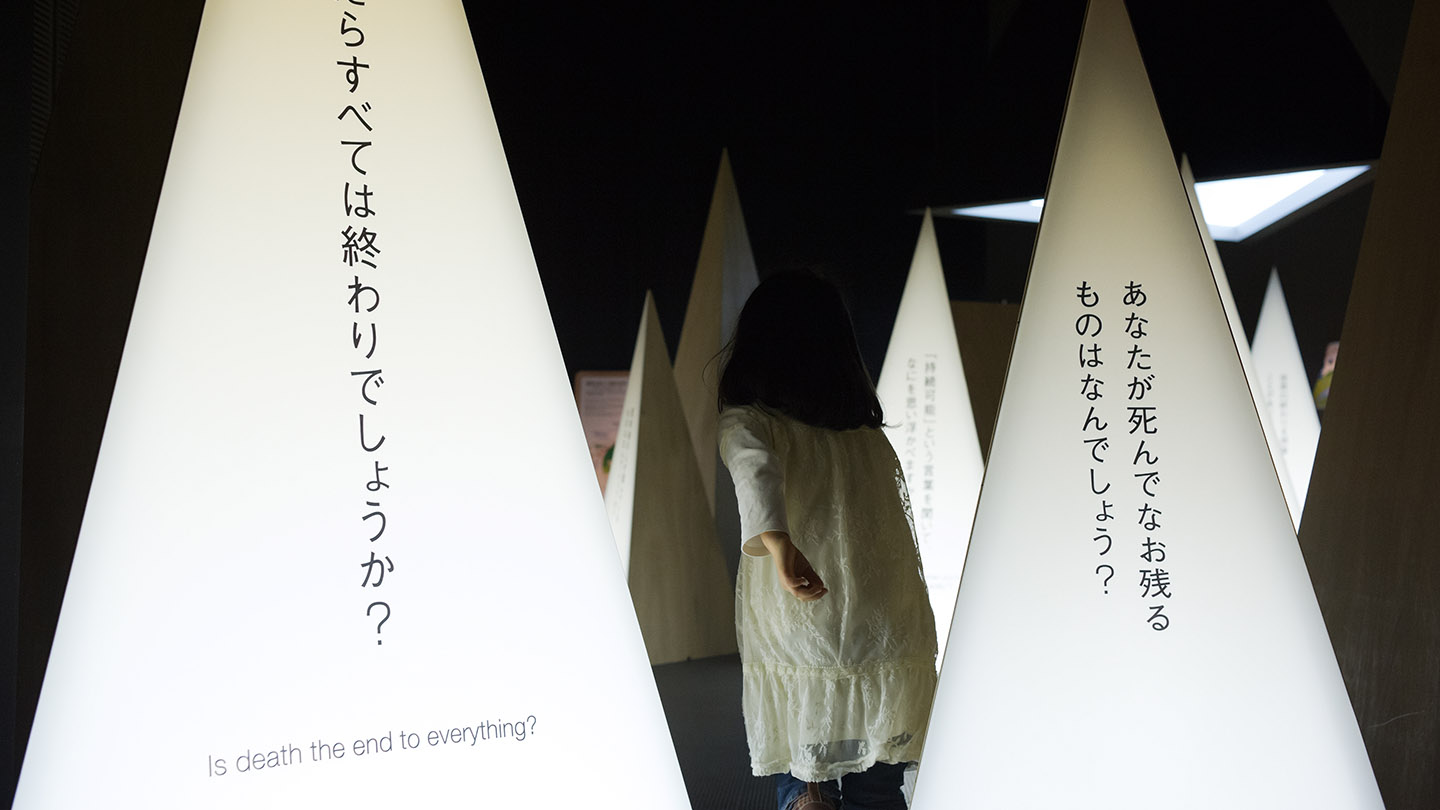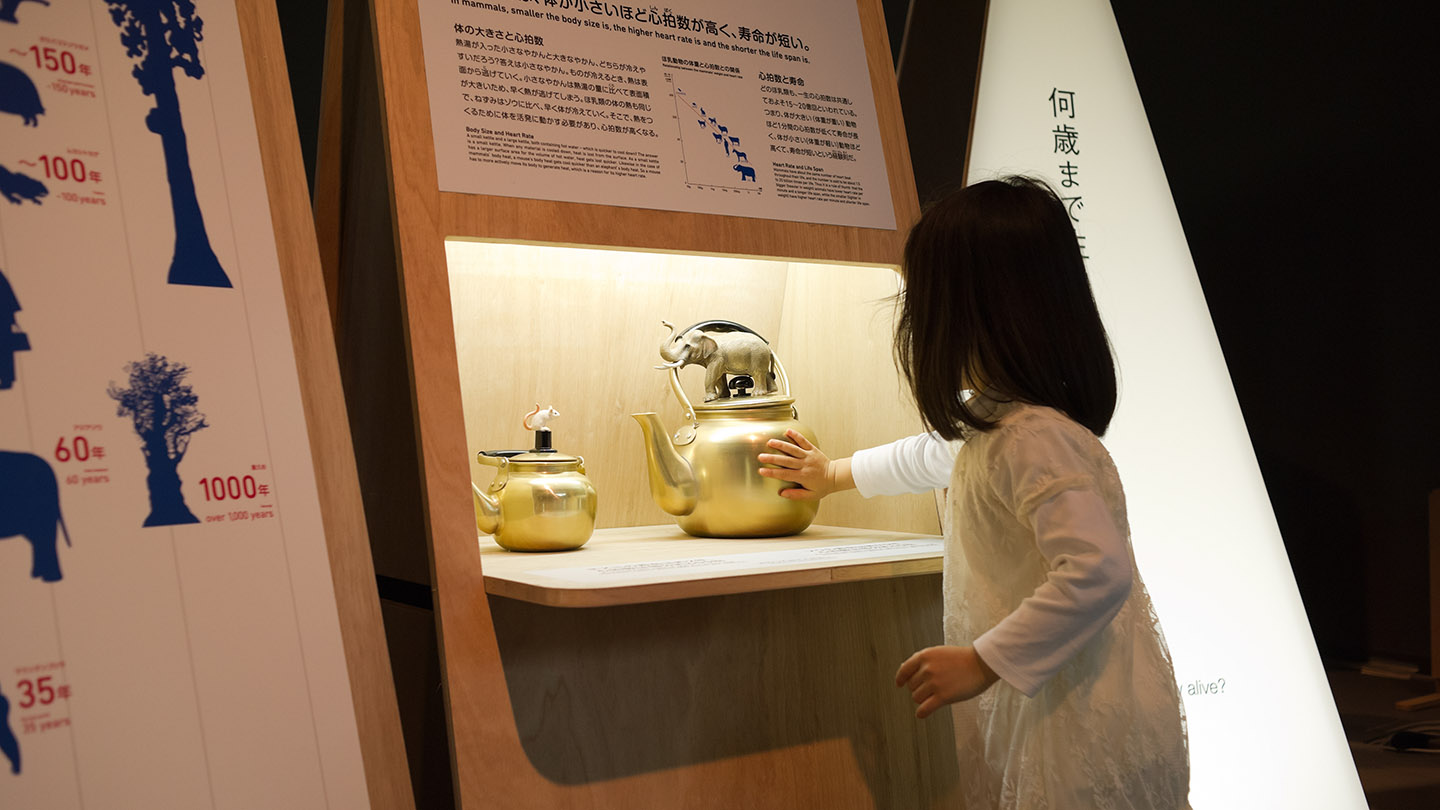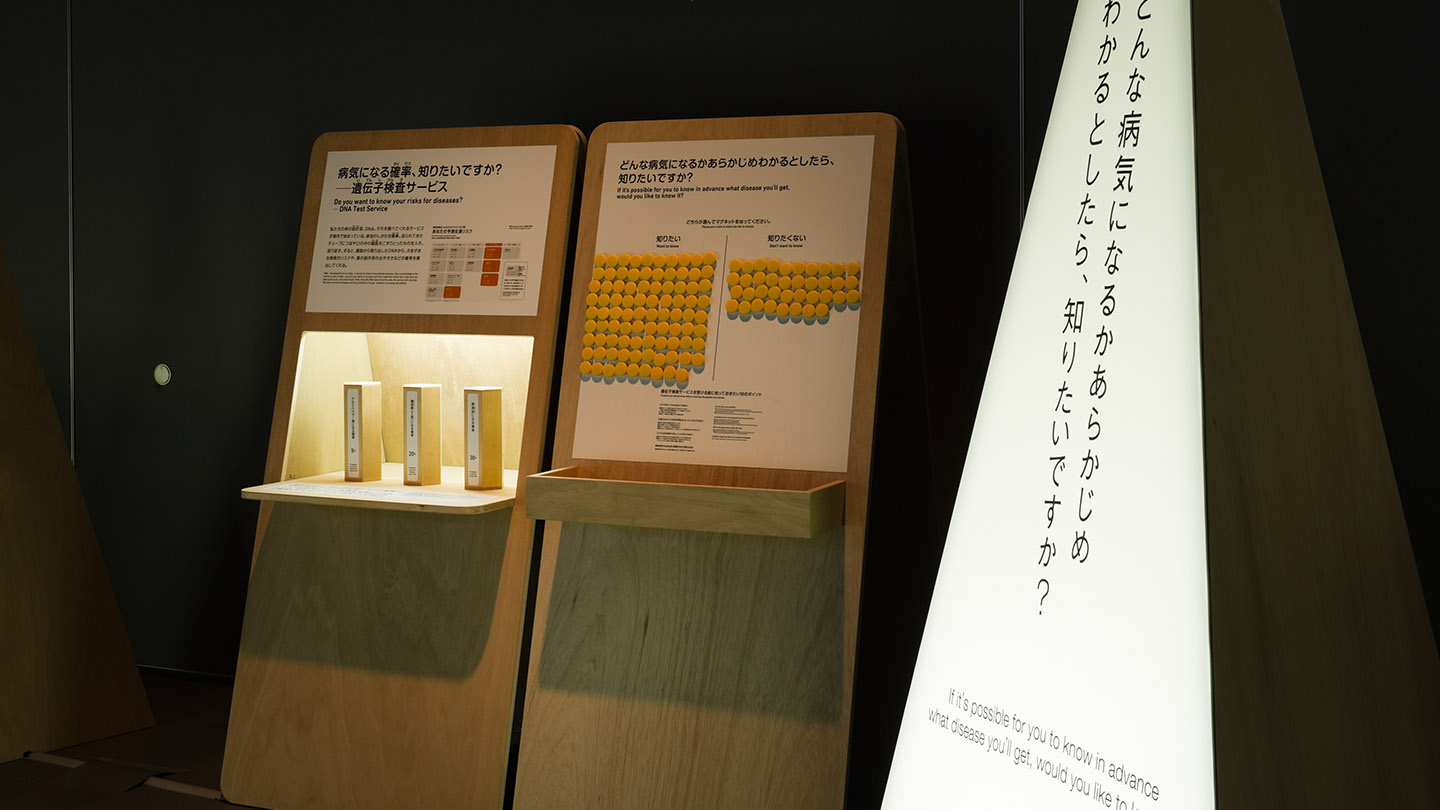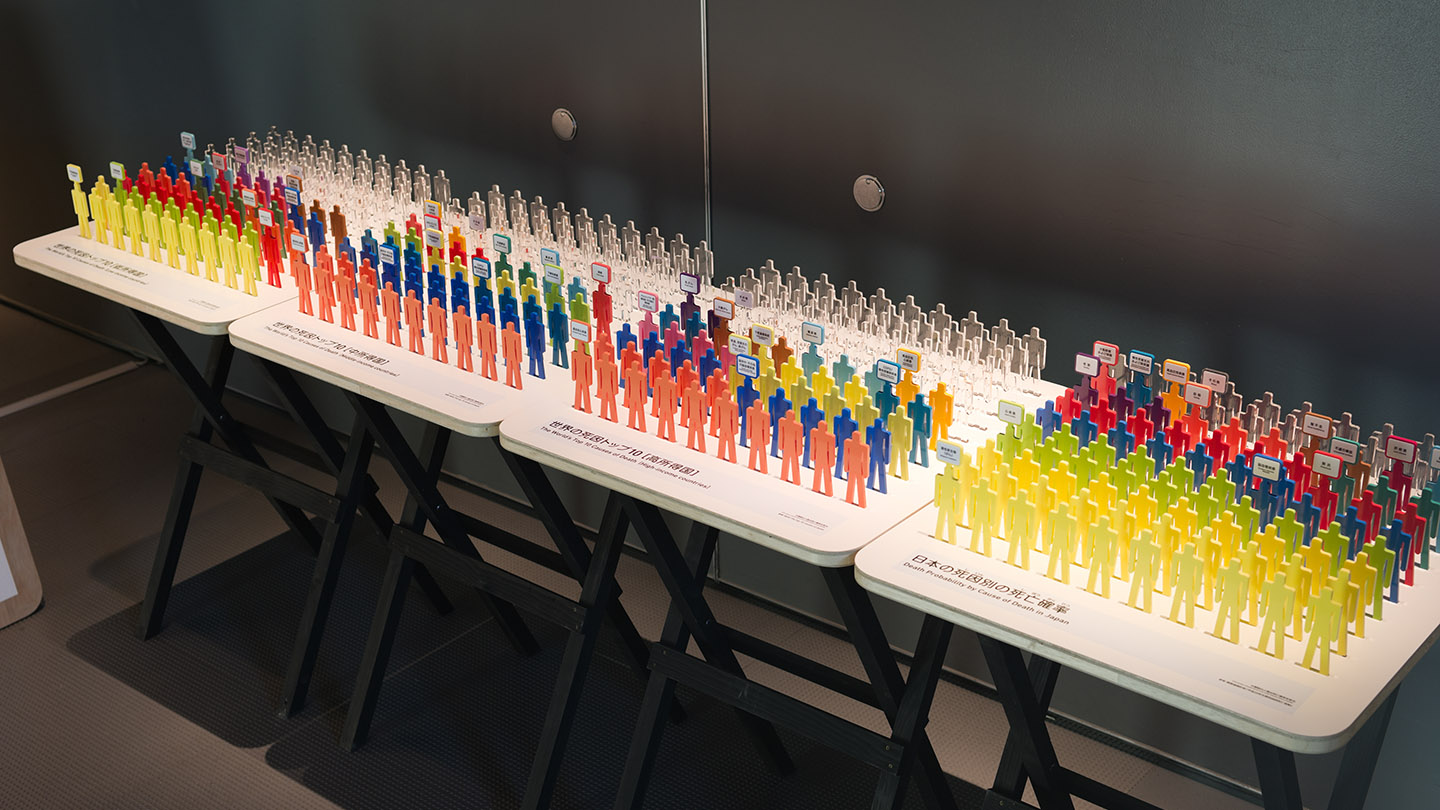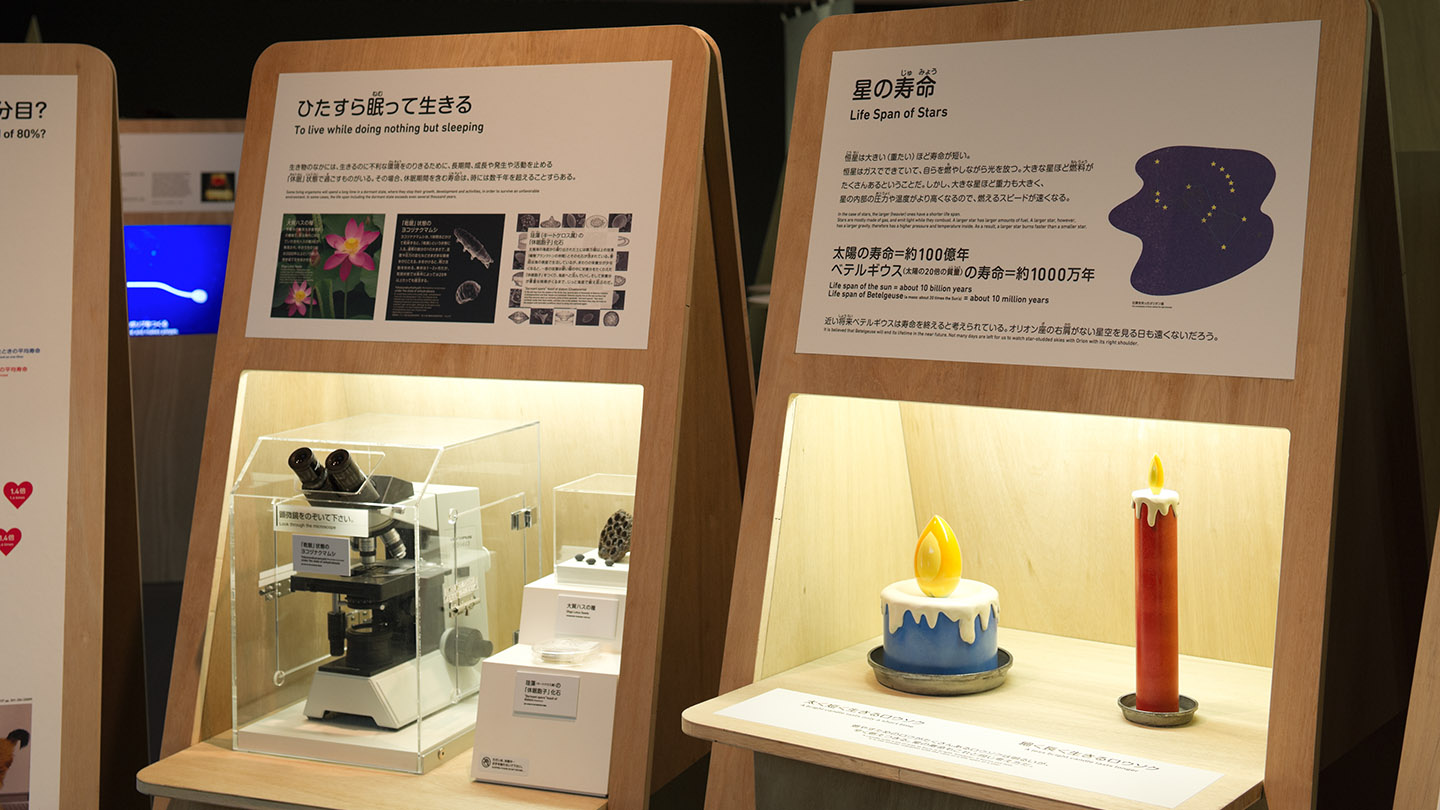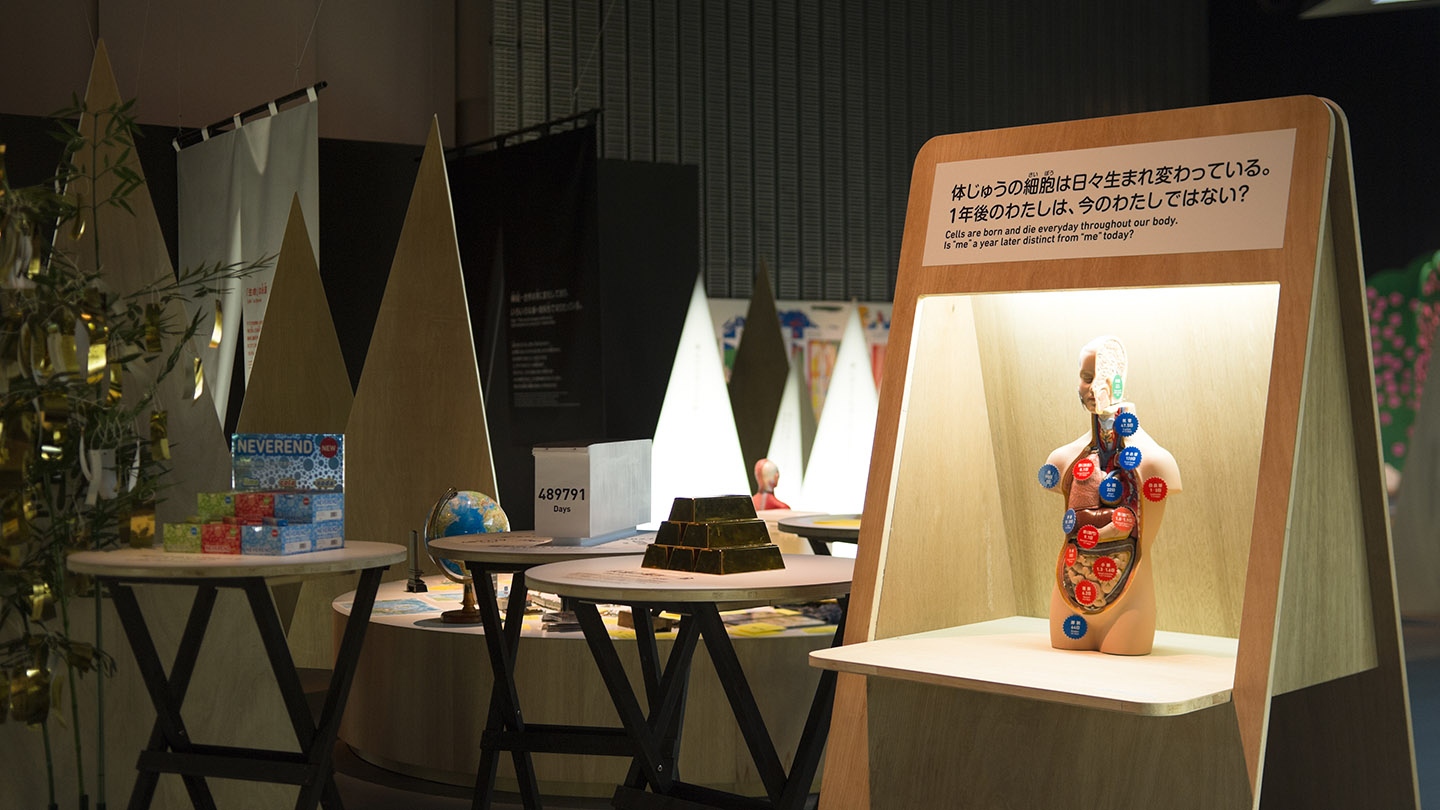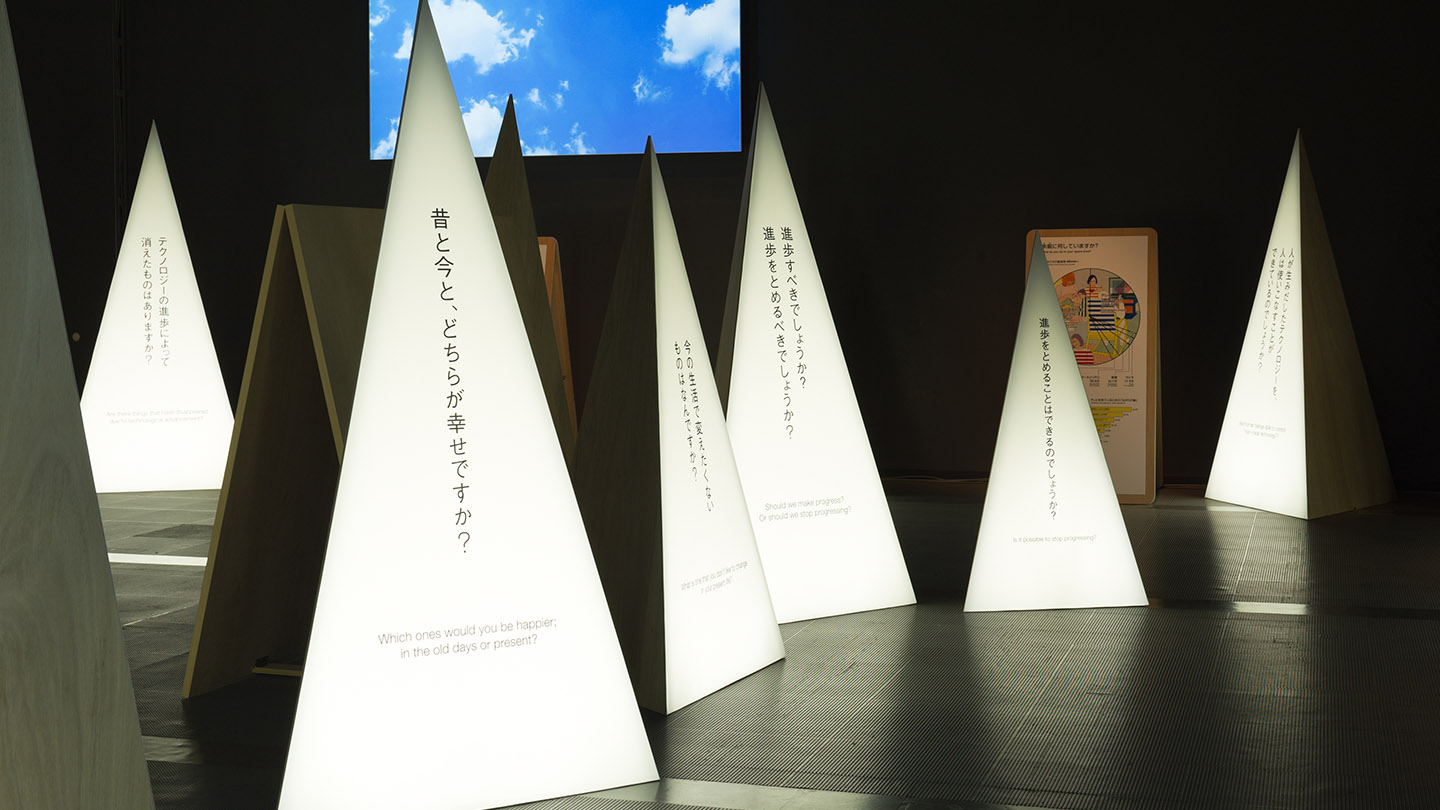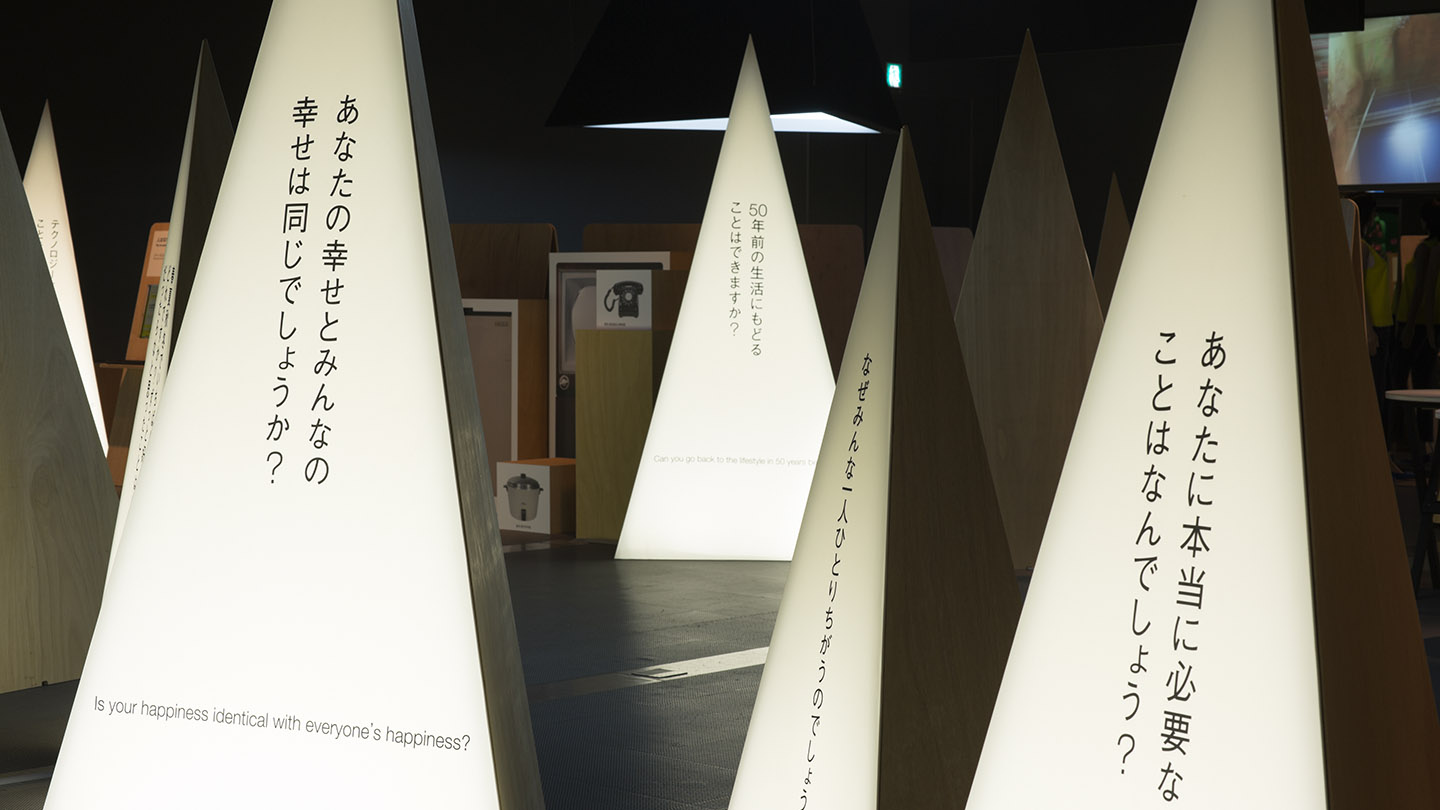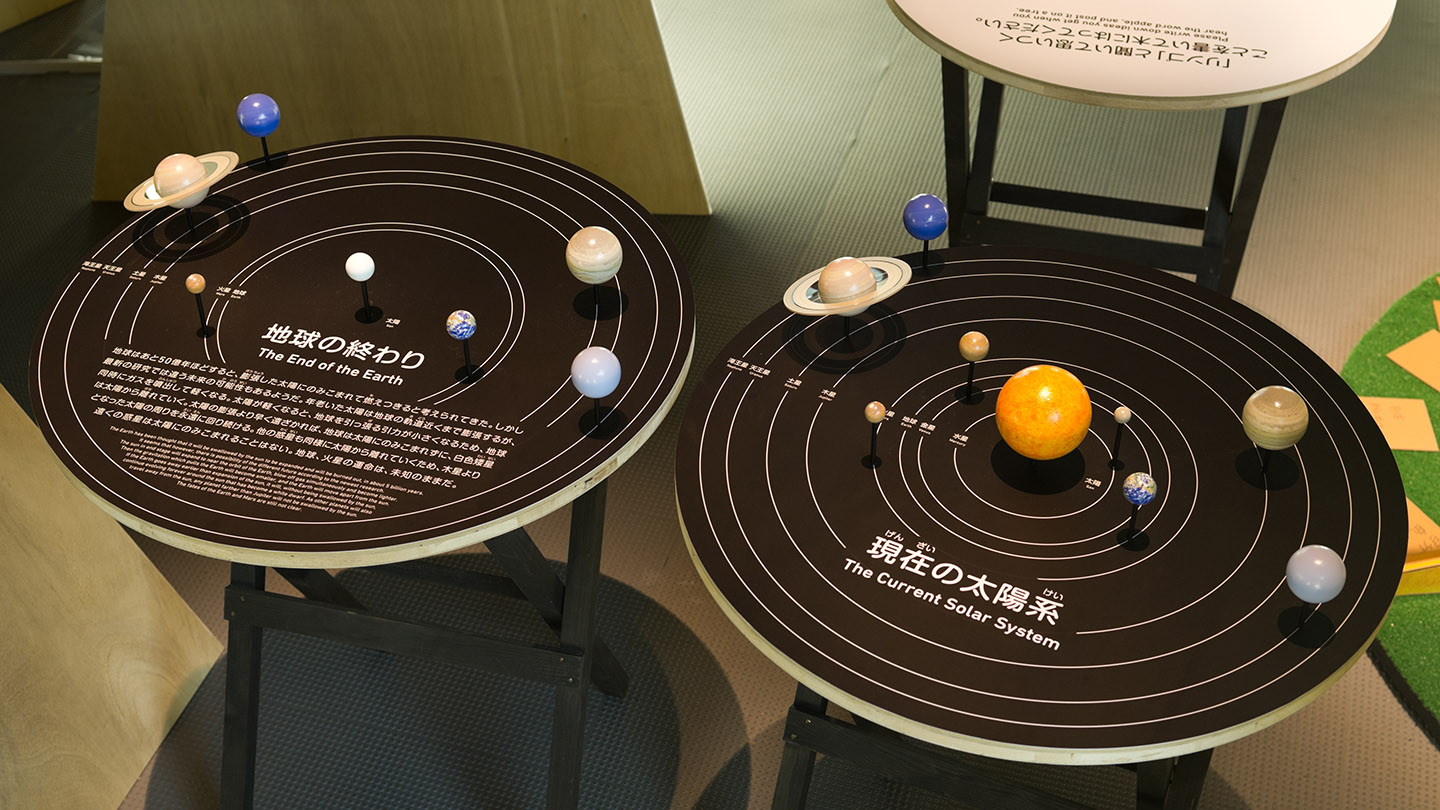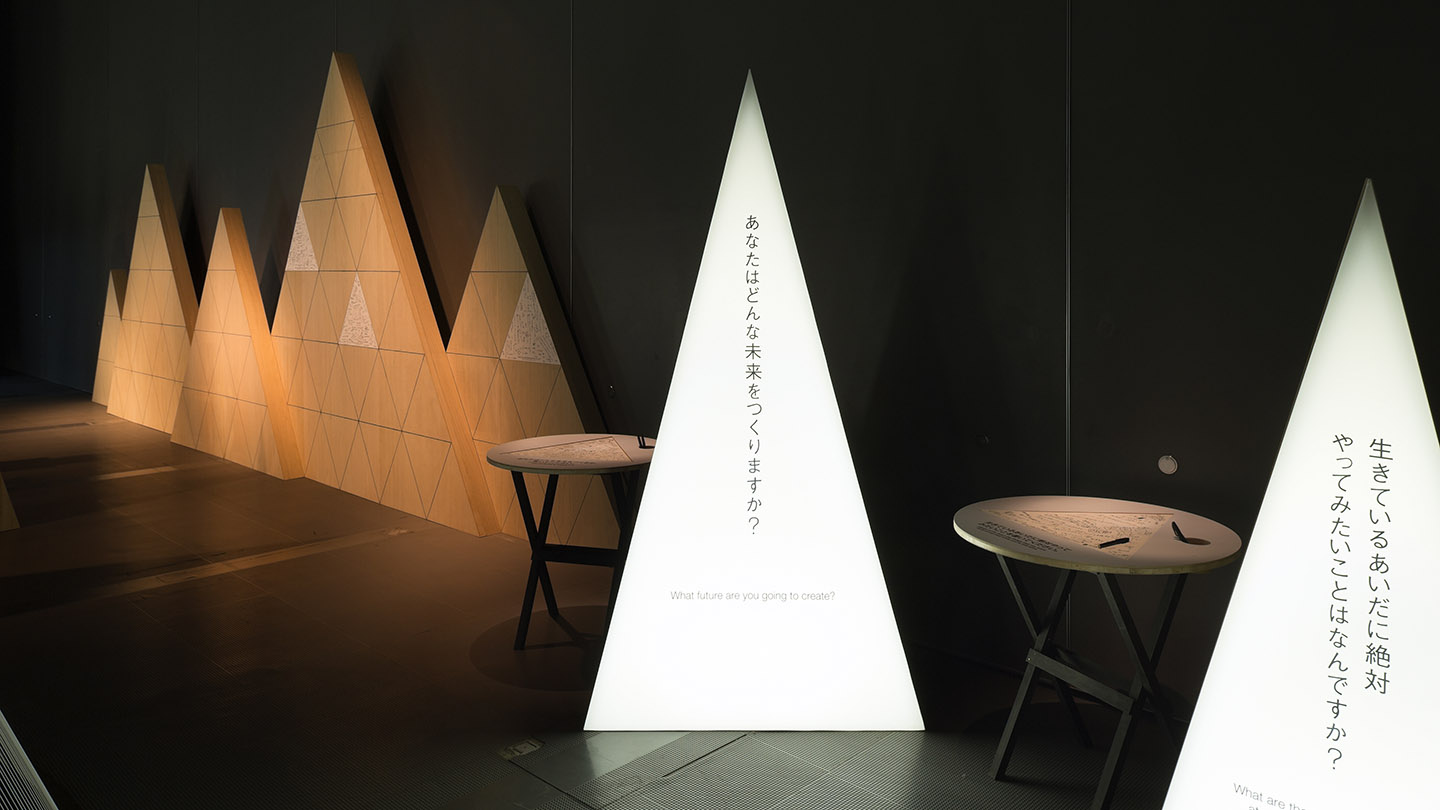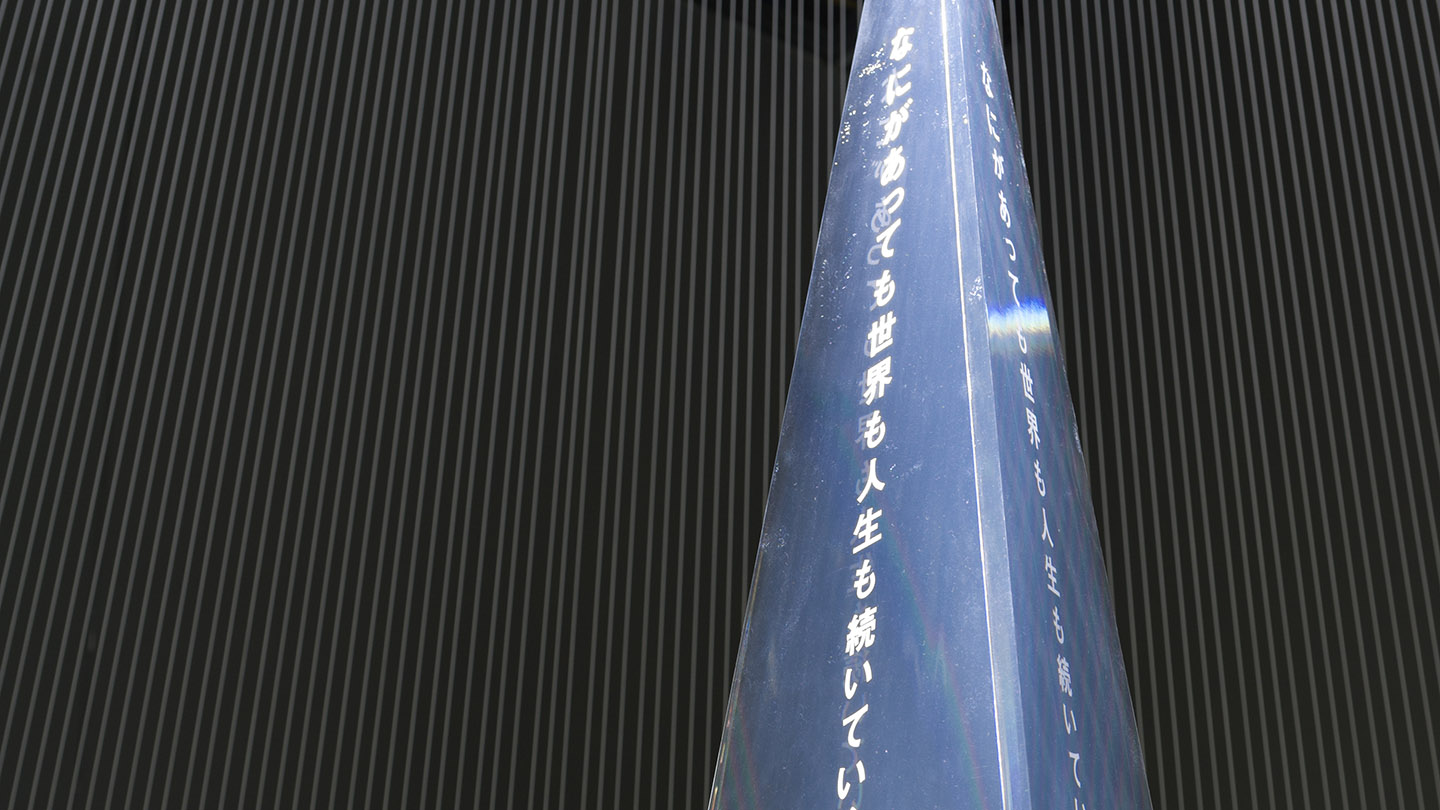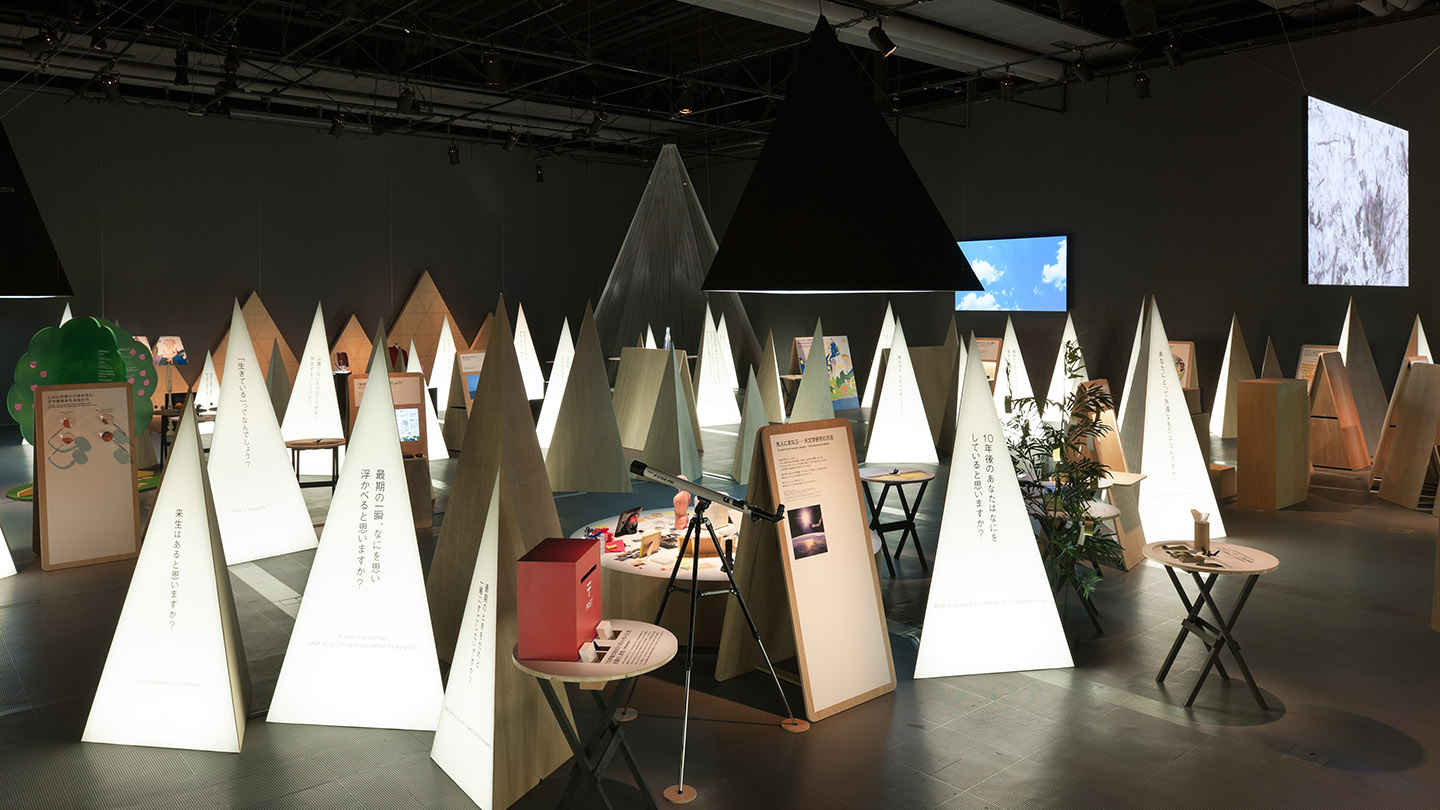This exhibition has ended.
Exhibition Outline
Everything comes to an end. Human lives, nature, civilization—even our universe. In spite of this, our busy schedules have left us little room for contemplation of "endings."
The disastrous Great East Japan Earthquake of March 11, 2011, reminded us that even the most peaceful, tranquil days may be brought to an end. We have come to the realization that our lives, bolstered by science and technology, are frail and fleeting.
In light of the immediacy of such "endings," let us consider what we should cherish in our lives and how we should live side-by-side with science and technology. It is important for everyone to have their own answers. This exhibition, held a year after the disastrous earthquake, attempts to present visitors with the opportunity to approach these questions head-on.
Once you enter the exhibition, you are greeted by a variety of questions informed by a wide spectrum of thought. Guided by scientific topics that act as helpful hints, visitors will engage in dialogue with themselves, discuss the questions with friends and family, peek at each other's answers, and work their way through all 73 questions. After all the questions have been answered, it should become readily apparent what is important to you.
Out of this knowledge of "endings," we will find the hope to keep on living. The story that begins with an "ending" begins now.
The exhibition's key visual was specially designed by Takashi Taima, an illustrator whose work is found in numerous magazines. Mr. Taima has offered his own "The End of the World" that is stylish and vibrant, yet brings back fond memories, in only the way he can.
Additionally, before the exhibition officially opens, we will be making a special website to highlight the opinions of prominent individuals from across the spectrum—from science and literature to business—on what "endings" look like to them. Visitors are also able to submit comments.
Contents
Earthquakes, typhoon, volcanoes, meteors, sickness, traffic accidents, wars, terrorism ? numerous terrors may strike unannounced, bringing an end to us. If you could know such disasters were going to strike ahead of time, would you want to? Here we will understand the limits of scientific prediction and consider how to approach uncertain risks.
Questions such as:
"What do you worry about the most in your life?"
"If you could know, would you want to know what kind of sicknesses you will come down with?"
Unanticipated endings
Earthquakes, typhoon, volcanoes, meteors, sickness, traffic accidents, wars, terrorism ? numerous terrors may strike unannounced, bringing an end to us. If you could know such disasters were going to strike ahead of time, would you want to? Here we will understand the limits of scientific prediction and consider how to approach uncertain risks.
"My" end
Everyone is bound to pass away eventually. As the mechanisms of life are being discovered and medical technology advances, however, the concept of "living" and the boundary between life and death is changing. What makes me "me"? What defines who I am? We will broadly and earnestly question the nature and location of identity.
Questions such as:
"If you could have eternal life, would you take it?"
"What is 'living'?"
The end of culture
Technological advances have greatly affected human life. Since time on earth began, humans and nature have continued their evolution uninterrupted. We will consider the nature of sustainability ? what, until when, and with whom? In a world rocked by change, we will reconsider what should be maintained.
Questions such as:
"Can we return to the lifestyle of 50 years ago?"
"Have we lost anything during our technological advances?"
The end of the story
What does the "end of the world" mean? The universe? The earth? Your life? Or perhaps an important person or thing? This exhibition closes by reconfirming that, this instant, we are alive and the world is continuing on. The "story that begins with an end" begins now.
Questions such as:
"What 'end' entails the end of the world to you?"
"What type of future will you carve out for yourself?"
Related exhibition: "'Love-letter' Writing Space"
This space allows us to write a "love letter" to those that we love, our family, our friends, those dear to us, in order to enable us to live out our time on this earth. "While I am still alive, I want to go here with you." "Before I go, I want to spend this type of time together." As if replying to the questions posed through the exhibition, we can complete our love letters by writing the answers on cards.
Venue: 1F Symbol Zone
Venue Scenery
Overview
- Title
- Special Exhibition "The End of the World - 73 Questions We Must Answer"
- Term
- March 10 (Sat.) – June 11 (Mon.), 2012
- Opening Hours
- 10:00 – 17:00 (Please make sure to enter at least 30 minutes before closing time.)
- Venue
- 1F Exhibition Space a, National Museum of Emerging Science and Innovation
- Closed
- Every Tuesday (will be open March 20 & 27, and April 3)
- Admission Fees
-
Adults: 1,000 yen, 18 years old and under: 300 yen
Groups (8 or more people): Adults: 800 yen, 18 years old and under: 240 yen
Member's Club "Friends of Miraikan": Adults: 320 yen, 18 years old and under: 80 yen
*Permanent Exhibition can be viewed.
*Free admission for those in possession of a disabled person's certificate and up to one accompanying person.
- Organized, Planned and Produced by
- National Museum of Emerging Science and Innovation (Miraikan)
- Supported by
- Tokyo Waterfront Urban Development Committee, Tokyo Rinkai Fukutoshin Group

